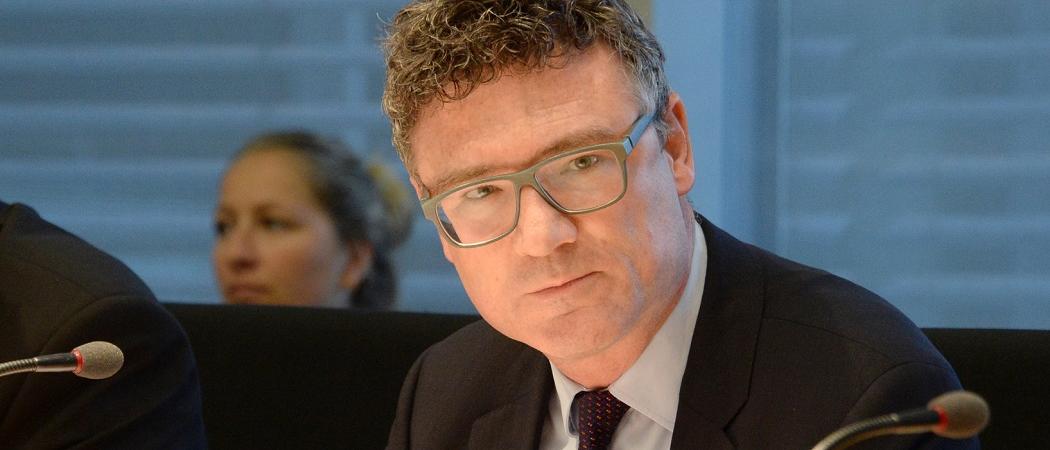Leading voice on research and education in German parliament says Japan should send more scientists and students to the EU if it wants to keep up with China in European R&D ties

Stefan Kaufmann. Photo: German Bundestag
China is outflanking Japan in building research cooperation with Germany because it sends its best students and scientists to study and work in the country, a leading voice in German research policy has told Science|Business.
Top Chinese students scientists are joining “the best faculties” and they speak really good German, said Stefan Kaufman MP. It is not as easy to forge research ties with Japan. “You have to go there,” Kaufman said, “I really think [Japan] should send more researchers and more students to Europe and to Germany.”
Kaufman is a member of chancellor Angela Merkel’s CDU party, who for ten years served as research and education spokesman in the German federal parliament. Over the last decade he says, he has watched China grow as an economic titan and as a major R&D partner for Germany. Research cooperation with Japan, however, isn’t what it used to be.
Speaking to Science|Business following publication late last year of the second report by the federal ministry for education and research (BMBF) on Germany’s international science partnerships, Kaufman said that when he first visited Japan four years ago, it struck him that Japan and Germany “were very much like an old couple.” They had a good relationship, but things had become “boring.”
Since then, things have picked up a little. “The mentality of Japan and Germany [is] focused on excellence and high standards,” said Kaufman. That makes it easy to work together in specific areas of mutual interest. For example, Japan is strong in robotics, industrial machinery and the automotive industry.
But it remains the case that while China is proactively promoting research cooperation, it is harder to maintain R&D links with Japan. “We have limited capacities. We are a big country, but we can’t [be] everywhere in the world. Everybody wants to cooperate with us, so we have to focus,” Kaufman said.
The difference is that China has taken a more strategic approach to building research cooperation. While ten years ago, when Kaufman entered parliament, China was sending lots of students, they weren’t especially good. “Nobody was able to speak German really,” he said. “Now they really send the best students to the best faculties,” said Kaufman. “They speak good German, they are very good students.”
€978 million for international R&D
The first BMBF report on Germany’s international science partnerships, released in 2017, followed the publication earlier that year of a new international strategy for science, research and education, and a parliamentary resolution in 2015 requiring the ministry to report on its international efforts every two years.
The latest report covers BMBF’s foreign activities during 2017-2018, as well as those of German companies.
It shows federal government spending on international cooperation in education and research rose from €802 million in 2015, to €978 million in 2018.
The largest share, €440.3 million, went to major research infrastructures like CERN, the European Southern Observatory, and the DESY particle accelerator, which although a national project carries out much international research. €156 million was for education projects not related to R&D, €91.5 million for health, €87.4 million for cross-sectoral innovation activities, €62 million for climate and environment, and €56.6 million for ICT.
Whereas the previous report’s main focus was Europe, the latest one puts a spotlight on Africa, which accounts for about €300 million of the BMBF’s overseas spending. Kaufman said this highlights Germany’s broader international development strategy for the continent. In research, the BMBF’s Africa priorities are environment, natural resources (including food), and health.
For example, the report highlights a €50 million investment in a sub-Saharan research network for health, which will look for ways to address serious diseases like malaria. Since 2012, Germany has also spent some €100 million on climate research centres in western and southern Africa, with plans to spend €40 million more by 2023. Besides conducting research, the centres also train graduates and postgraduates for environmental jobs in governments and international organisations.
Breaking the ice with Russia
Alongside Europe and Africa, Germany’s international research strategy is split into three groups. First are the industrialised states of the US, Canada, Israel, Japan, South Korea, Singapore, and Australia. Next are the BRICS: Brazil, Russia, India, China and South Africa. The third group is growing and developing countries, including the Middle East, Asia and Central Asia, Latin America, and the countries of the EU’s Eastern Partnership (Belarus, Ukraine, Moldova, Armenia, Azerbaijan and Georgia).
Kaufman said Russian collaboration is “very important” when it comes to research projects like MOSAiC, which launched last September. In a year-long expedition the German research ship Polarstern will take the closest look ever at the Arctic as the epicentre of global warming, in order to gain fundamental insights that are key to better understanding of climate change.
Hundreds of researchers from 20 countries are taking part in the project, which Kaufman said, “wouldn’t work without the support of Russian airplanes and Russian ships”. Swedish and Chinese vessels will also carry supplies to Polarstern.
Vocational training is another area where Russia and Germany work together, while the ministry’s report also highlights Russo-German space cooperation. Nevertheless, the current political situation means working with Russia has “become more difficult” Kaufman said. The German government has been a vocal critic of Russia’s annexation of the Crimean Peninsula in 2014.





 A unique international forum for public research organisations and companies to connect their external engagement with strategic interests around their R&D system.
A unique international forum for public research organisations and companies to connect their external engagement with strategic interests around their R&D system.